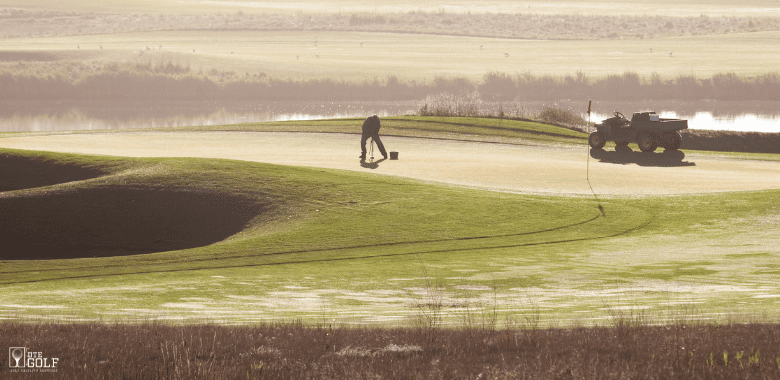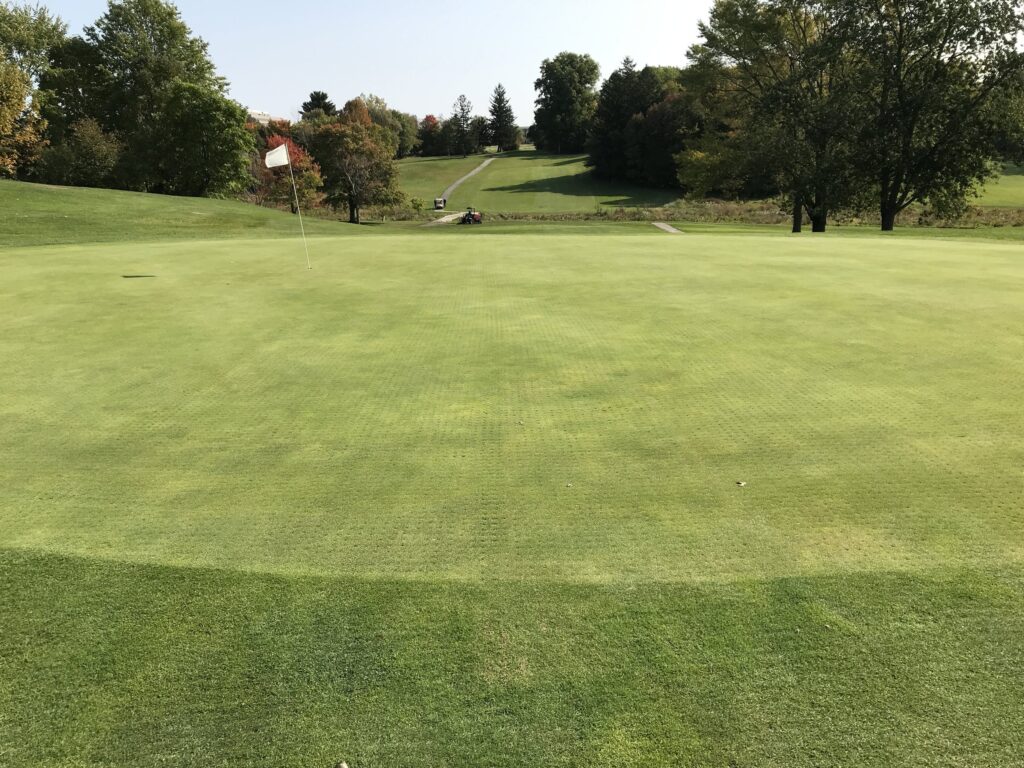It shouldn’t be hard to understand why turfgrass is so important to a golf course, it is the course! And aside from the environmental concerns, neglecting your turfgrass has a detrimental effect on playing conditions. If golf course turf is unhealthy, sparse, or overgrown, even the most experienced player will have a bad game. To make matters more complicated, with golfers and staff walking and driving over the turf all day, it can be hard to keep the course healthy.
Golf course superintendents and other turfgrass professionals have a lot on their plate, and sometimes they come into the job and inherit the mistakes of others. Some of the most impactful decisions about your golf course come before the course is even built. Mulligans may work in the game of golf, but there are no do-overs with turfgrass.

What Could Go Wrong?
Well maintained turfgrass is capable of weathering major wear and tear, but when things go wrong, your turf becomes more delicate and susceptible to damage. Major maintenance mistakes set off a domino effect on the golf course, leading to costly damage and in the worst cases, complete turf reinstalls. Here are the four major mistakes to never make on the course.
Slope and Site Mistakes
You may not have been there for the construction of the course, but you will still feel the effects of poor slope and site. When choosing a site to develop a golf course or planning an expansion on your course consider the entirety of the site before beginning. Properly planned sites have the benefits of reduced need for pesticide application, more significant water infiltration, reduced water runoff, and improved environmental benefits associated with adequately managed turfs.
Bad Mowing Practices
Mowing is a crucial practice with any turfgrass, but it’s not all about grass height. Mowing practices affect turf texture, root development, turf density, color, and even water tolerance. Whether you’re mowing too much or too little, mowing wrong damages turf in the long run even if it looks fine at the moment. Every golf course should have a mowing plan in place that takes into account the specifics of your course. Keeping your blades sharpened, mowing regularly and in planned patterns, and having experienced golf course technicians operate the mower are all pivotal steps that will pay off in the long run.
Neglecting Aeration
Some of the worst damage to turfgrass comes from golfers themselves, driving, putting, and walking across the course. However, keeping people off the golf course may not be the best for business. While good maintenance practices can strengthen your turf against damage, there are inevitable issues that golf course turfgrasses face.
When soil becomes compacted due to traffic from people and carts, aeration is the next step. Aeration is making holes in the course and filling them with sand to draw water out of compacted soil. While this is easier than chastising your clientele, you will still need to keep golfers off the turf during planned aerations. When done correctly, aeration can eliminate soil compaction and secure improved air and water exchange.
Using One Size Fits All Topdressing
Golf Course Superintendents typically have their methods and their own experience with Topdressing and tend to rely on that experience. Topdressing is meant to improve surface smoothness and firmness while assuring turf recovery from thinning.
However, setting your topdressing schedule in stone means ignoring the natural changes your turf goes through. Severe heat, sudden rains, and other sudden weather events set off major reactions from your turfgrass as it attempts to adjust Your topdressing routine should constantly be modified to accommodate for rapid changes in course condition.

When It All Goes Right
We’ve reviewed how major maintenance mistakes can be catastrophic on the course, but there’s a lot of great reasons to care about your maintenance routine. Turfgrass that is carefully and properly maintained experiences a range of benefits:
Improved Fertility Uptake
Smooth Playing Conditions
Improved Turf Rooting and Nutrient Intake
Exchange of Oxygen in The Soil Profile
Improved Soil Saturation
Thatch Reduction
Additional Protection from Pests and Disease
Remember to always have certified and licensed golf course maintenance professionals on staff if you want to keep your golf course up to par. Down To Earth’s Golf Division is obsessed with course conditions, and dedicates their time and effort to maintaining and beautifying every client’s course. We even offer consulting services by our staff of award-winning certified Golf professionals.
If you’re curious about DTE Golf®, schedule a free evaluation and we’ll have a golf professional meet your staff, walk the course, and provide unbiased recommendations, no strings attached.

